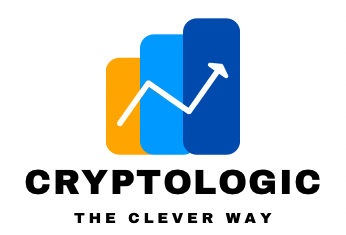Unveiling the Depths of the Mirror Trading International Scandal: Australians Brace for Fallout
- Written by Cryptologic
In the underbelly of the cryptocurrency boom, a tale of deception and financial ruin unfolds as South African alleged conman Johann Steynberg, the brawny mastermind behind Mirror Trading International (MTI), faces the ramifications of orchestrating what is now touted as the world's largest cryptocurrency Ponzi scheme. As Steynberg, resembling a front-rower for the Springboks, was led away in handcuffs in the Brazilian city of Goiânia two years ago, thousands of investors, including a significant Australian contingent, believed their ordeal was over. Little did they know that the nightmare was far from its conclusion.
The Meteoric Rise and Catastrophic Fall of MTI
A Promise Shattered
MTI, also known as MTI Club, emerged on the cryptocurrency scene with grand promises of delivering astronomical returns to investors by pooling tens of thousands of bitcoins. Bitcoin's surge during the pandemic provided the perfect backdrop for the scheme, luring in over 100,000 individuals from 140 countries. The illusion crumbled as a cascade of investor complaints triggered MTI's downfall in 2020.
The Unravelling
By the time Steynberg was apprehended in December 2021, over $2.6 billion of investments had vanished into thin air. Now, the repercussions reverberate, with MTI's South African-based liquidators setting their sights on recouping funds from 5250 Australians entangled in the scheme. These individuals are suspected of profiting either through investment returns or by introducing new investors, drawing attention to the inherent risks of succumbing to enticing investment opportunities promoted on social media.
Australian Investors Caught in the Crossfire
Unravelling the Web of Complicity
The fallout from the MTI debacle serves as a stark reminder of the perilous terrain ordinary people traverse when enticed by seemingly lucrative investment schemes. Gerard Brody, a leading Australian consumer advocate, notes the surge in Ponzi schemes and investment scams during the pandemic, urging caution. The Australian Securities and Investments Commission's recent investor alert signals the gravity of the situation, as scores of illicit investment schemes target unsuspecting consumers.
Legal Ramifications Down Under
MTI's tentacles extend to Australia, where more than 5000 investors find themselves ensnared. In a recent legal development, South African liquidators obtained court orders from Australia's Federal Court, greenlighting interviews with Australian-based investors. The goal: to explore avenues for reclaiming funds distributed during the scheme's operation. This legal saga sheds light on the intricate web of winners and losers among Australian investors, with some now apprehensive about potential legal entanglements.
The Untold Impact
Despite the magnitude of the investor base, MTI's Australian victims maintain a low profile, confining their discussions to private online forums. These discussions revolve around the looming prospect of repaying earnings from the scheme, raising questions about the intricacies of distinguishing between unwitting participants and complicit beneficiaries.
The Pyramid Scheme Mirage
Deception Unveiled
At the heart of MTI's deception was the claim of a groundbreaking investment "bot" purportedly equipped with sophisticated bitcoin trading strategies, promising investors monthly returns of up to 10%. However, investigations reveal the bot's non-existence, with only a fraction of pooled funds invested and substantial misappropriation by Steynberg and associates. The scheme, as US authorities declared, embodied both Ponzi and pyramid elements, perpetuating a classic multi level marketing scam.
Legal Consequences
In a September ruling, a US court declared MTI and Steynberg guilty of breaking US law, imposing a staggering $3.4 billion in restitution and fines. This verdict marked a historic milestone, categorising MTI as the largest Ponzi scheme globally in terms of court-imposed penalties. Steynberg's extradition battle to South Africa continues, as US regulators expose the scheme's fraudulent foundation.
Regulatory Dynamics: US vs. Australia
The Regulatory Disconnect
While US regulators vigorously pursue wrongdoers in the aftermath of the MTI debacle, Australian regulators, notably the Australian Securities and Investments Commission (ASIC), maintain a more passive role. Sources intimate that ASIC has received only two complaints from local participants, reflecting the divergence in enforcement approaches. The US penchant for pursuing offshore sellers contrasts with Australia's emphasis on investor responsibility once they engage with unregistered foreign schemes.
The Call for Vigilance
Consumer advocates like Gerard Brody emphasise the importance of due diligence before investing, urging Australians to verify the registration and licensing status of potential schemes on ASIC's list website. The absence of such checks leaves investors without consumer protections, a stark reminder of the risks associated with dealing directly with unlicensed foreign entities.
Conclusion: Navigating the Aftermath
As the MTI saga continues to unfold, Australians find themselves grappling with the repercussions of a scheme that promised riches but delivered financial ruin. The call for vigilance echoes through the corridors of regulatory bodies, urging individuals to exercise caution in the volatile landscape of cryptocurrency investments. As legal proceedings unfold, the fate of thousands of Australian investors hangs in the balance, emblematic of the broader challenges posed by deceptive financial schemes in an increasingly interconnected global economy.






